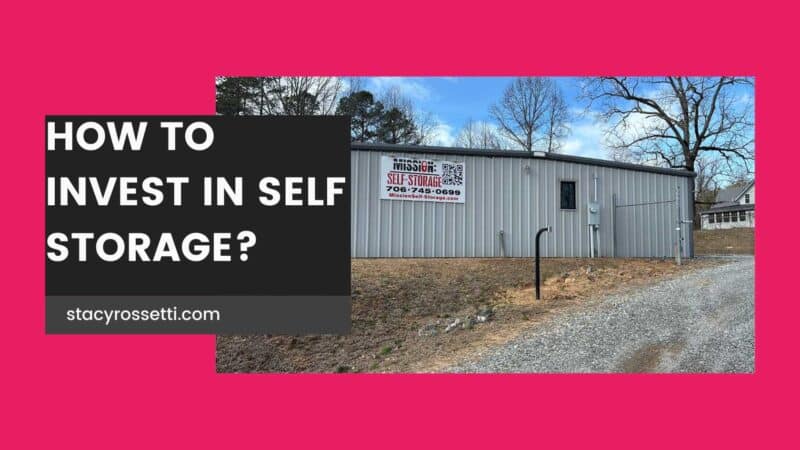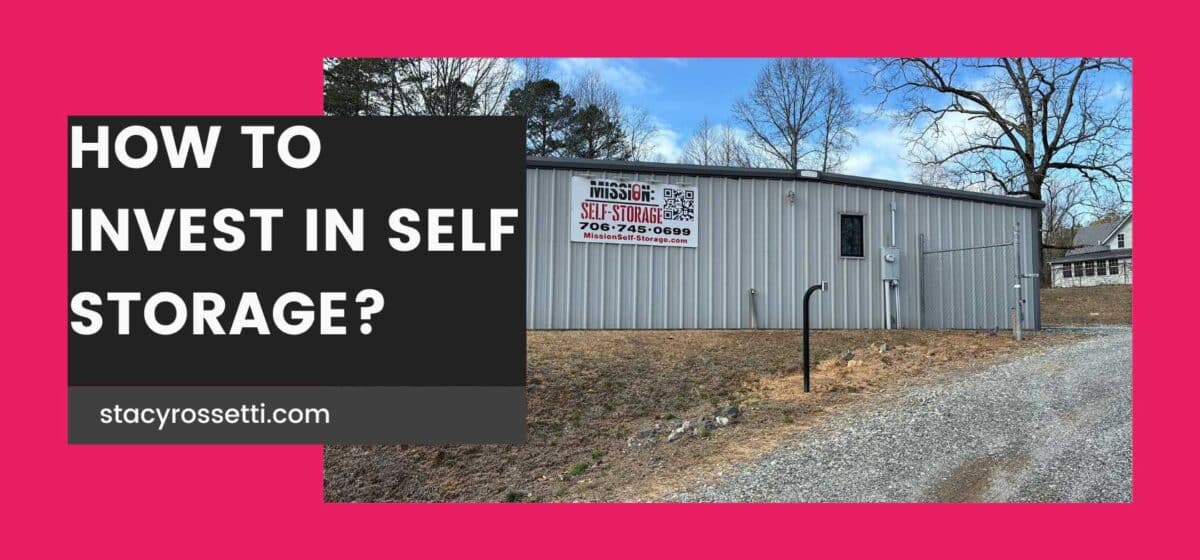
Investing in self-storage units has become a popular choice among real estate investors, and for good reason. The self-storage sector offers steady returns, resilience during economic downturns, and relatively low management complexities compared to other real estate investments. In this blog, we’ll explore the ins and outs of investing in self-storage, using insights from experts like Stacy Rossetti to guide you through the process.
Why Invest in Self-Storage?
Before diving into the specifics, it’s crucial to understand why self-storage is an attractive investment option:
Stable Demand: Self-storage facilities cater to various needs, from personal storage during life transitions to business inventory storage. This diverse demand helps ensure steady occupancy rates.
Economic Resilience: Self-storage units often perform well even during economic downturns. People continue to need storage solutions, whether for downsizing, moving, or other reasons.
Low Operating Costs: Compared to residential or commercial real estate, self-storage units generally have lower maintenance and management costs. They require less hands-on management and have fewer maintenance issues.
Scalability: Self-storage properties can range from small facilities to large, multi-acre sites. This scalability allows investors to start small and grow their portfolios over time.
Steps to Invest in Self-Storage
Investing in self-storage involves several key steps, from research to acquisition and management. Here’s a comprehensive guide to get you started.
1. Conduct Market Research
Before you invest in self-storage, it’s essential to understand the market dynamics of the area you’re considering. Here’s what to look for:
Demand and Supply: Analyze the local demand for self-storage and the number of existing facilities. Areas with high population growth or urban density often have greater demand.
Rental Rates: Research the average rental rates for storage units in the area. This will help you estimate potential revenue and assess the profitability of the investment.
Competition: Identify your competitors and assess their occupancy rates, pricing strategies, and customer reviews. Understanding the competitive landscape will help you position your facility effectively.
2. Evaluate Property Types
Self-storage facilities come in various formats, including:
Traditional Self-Storage: These are standard facilities with drive-up access units and sometimes climate-controlled options.
Automated Self-Storage: Facilities with high-tech systems that allow tenants to access their units and manage their accounts online.
Mobile Self-Storage: Containers that are delivered to a client’s location for them to fill and then stored at a central facility.
Each type has its pros and cons, so choose the one that aligns with your investment goals and market needs.
3. Secure Financing
Financing is a crucial aspect of investing in self-storage. Options include:
Traditional Mortgages: Secured through banks or credit unions. These are ideal for well-established investors with strong credit histories.
Commercial Loans: Tailored for business properties and often used for larger self-storage facilities.
Private Investors: Partnering with private investors or using funds from real estate investment groups can be a flexible financing option.
Ensure you have a clear financial plan and understand the costs involved, including property acquisition, renovations, and ongoing operational expenses.
4. Find the Right Property
Once you have your financing in place, start searching for properties. Consider the following:
Location: Choose a location with high visibility and accessibility. Proximity to residential areas or business hubs can drive higher demand.
Condition: Evaluate the physical condition of the property. Look for facilities that are well-maintained or require minimal renovations.
Potential for Expansion: Properties with additional land or space for expansion can offer growth opportunities and increased revenue potential.
5. Conduct Due Diligence
Before finalizing your purchase, perform thorough due diligence:
Inspection: Conduct a detailed inspection of the property to identify any structural issues or needed repairs.
Financial Analysis: Review the property’s financial records, including income statements and expense reports. Assess its profitability and potential return on investment.
Legal Considerations: Ensure there are no legal issues or zoning restrictions that could impact your ability to operate the facility.
6. Purchase and Manage Your Facility
Once you’ve completed your due diligence and secured financing, proceed with the purchase. After acquisition, effective management is key to maximizing your investment:
Marketing: Develop a strong marketing strategy to attract tenants. Utilize online advertising, local promotions, and social media to increase visibility.
Operational Efficiency: Implement efficient operational practices to minimize costs and maximize revenue. This includes optimizing pricing, managing vacancies, and maintaining the facility.
Customer Service: Provide excellent customer service to build a positive reputation and encourage tenant retention.
Learning from Experts: Stacy Rossetti Insights
Stacy Rossetti, a renowned expert in self-storage investing, offers valuable insights for both new and seasoned investors. Her approach emphasizes strategic planning and leveraging industry knowledge to achieve success. Here are some key takeaways from her expertise:
Focus on Location: Stacy highlights the importance of choosing the right location for self-storage facilities. Areas with high population density and limited existing facilities are often the best investment opportunities.
Understand Market Trends: Stay informed about market trends and emerging technologies in the self-storage industry. Stacy advises investors to adapt to changes and innovate to stay competitive.
Networking and Education: Engaging with industry networks and continuously educating yourself about self-storage investing can provide valuable insights and opportunities. Stacy emphasizes the importance of building relationships and staying updated on industry developments.
Conclusion
Investing in self-storage units can be a lucrative and stable investment choice, offering various benefits such as consistent demand, lower management costs, and scalability. By conducting thorough market research, evaluating property types, securing financing, and managing your facility effectively, you can position yourself for success in this growing sector.
Drawing insights from experts like Stacy Rossetti can further enhance your investment strategy, helping you navigate the complexities of self-storage investing and make informed decisions. Whether you’re a seasoned investor or just starting, the self-storage industry offers ample opportunities for growth and profitability.
Remember, the key to successful self-storage investing lies in understanding the market, making informed decisions, and continually adapting to industry trends. With the right approach, you can build a successful self-storage investment portfolio and achieve long-term financial success.


